 |
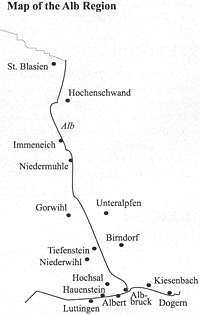 26th April
26th April
Once the campaign commenced, FML Prince Joseph von Lothringen, who commanded a small corps spread between Schaffhausen and the western end of Lake Constance was ordered by Kray to support FML Nauendorf and, should they come under heavy attack, to close up on Nauendorf’s corps. Kray’s order was based on the expectation that, as Moreau had done in 1796, the French would push further through the Höllental towards Donaueschingen, forcing FML Nauendorf to strengthen his right by moving troops from his left, so Lothringen was effectively being directed to cover FML Nauendorf’s weakened left.
As in 1796, the importance and independence of key commanders such as Nauendorf within the army structure. If necessary he could take direct command of Lothringen’s corps without further discussion with the commander-in-chief, and in the event of a French advance across the Upper Rhine (as Moreau intended with Lecourbe’s corps), Lothringen would be under FML Nauendorf’s local control and this sector would be better able to deal with any French advance. However, it may have given an unexpected advantage to the French too.
The famous spy of 1805, Charles Schulmeister, was then working in southern Germany with the French intelligence operative, Theobold Bacher, (officially secretary to the French ambassador) based at Basle. In 1805, Schulmeister had a Major Rulzki in his pay – Kienmayer’s ADC in 1805 – and says he "has been a friend of Rulzki since the last campaign." – the same name appears as Lothringen’s Chief of Staff! This is obviously an area worthy of further investigation too. Penetration of the Austrian command was thus easier than in the centralised French system, especially under Napoleon – the French may have been able to assess the intentions of the controlling commander (Nauendorf) rather more quickly than if control was exercised from the centre (Kray).
The resulting dispositions would in any event be critical for the course of the campaign. There were many discussions about the distribution of some battalions between the two local corps commanders over the following days: Nauendorf could issue the orders, but Lothringen was responsible for guarding the line between Schaffhausen and Lake Constance.
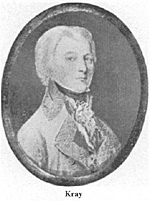 Unfortunately, FZM Kray did not anticipate any danger from the French troops in northern Switzerland. So, FML Lothringen had both to close some units up westwards as Nauendorf wished as well as sending four companies of IR7 Schröder as reinforcements to Archduke Ferdinand at Beringen. Nauendorf now prepared to respond to the main French thrust through the Höllental. After despatching IR2 to the main army, he had just 4 companies of
Tyrolean Jäger, 12. Light Battalion, the Swiss Rovéréa battalion, IR31, IR42 (2 batts), 2 squadrons of 12. Hussars, 10. Hussars and 12. Kinsky Light Dragoons.
Unfortunately, FZM Kray did not anticipate any danger from the French troops in northern Switzerland. So, FML Lothringen had both to close some units up westwards as Nauendorf wished as well as sending four companies of IR7 Schröder as reinforcements to Archduke Ferdinand at Beringen. Nauendorf now prepared to respond to the main French thrust through the Höllental. After despatching IR2 to the main army, he had just 4 companies of
Tyrolean Jäger, 12. Light Battalion, the Swiss Rovéréa battalion, IR31, IR42 (2 batts), 2 squadrons of 12. Hussars, 10. Hussars and 12. Kinsky Light Dragoons.
The Austrians too realised the importance of Basle as a source of intelligence -– it was only a few miles south of the Hüningen bridge. A Kundschaftersystem (Kundschafter is a multi-purpose word, meaning agent or scout) was working near Basle for them, organised by a Mr. Wittersbecher. Intelligence from here and local outposts had established in the meantime that the French were concentrating troops in the Hüningen bridgehead. So, at 0730 on 26th April, FML Nauendorf ordered GM Archduke Ferdinand to withdraw his outposts observing the bridgehead (under Oberst Mecsery) back towards the Alb river. At 1000, Nauendorf sent out an order to GM Archduke Ferdinand to move quickly with all his all available troops from the Upper Rhine to the area around Bonndorf. Soon after, Nauendorf was informed that Archduke Ferdinand had already moved a battalion of IR31, 2 companies IR Rovéréa, 4 squadrons 10. Hussars, and 2 guns from the Upper Rhine towards Bonndorf on his own initiative – whilst his Imperial blood allowed him rather more flexibility than most Austrian Generals, it also reflects his own military abilities. So, that afternoon FML Nauendorf sent two squadrons of 12. Light Dragoons to support the Archduke at Bonndorf.
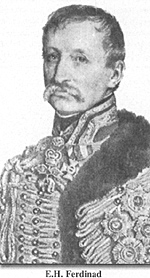 By the evening, Archduke Ferdinand’s troops were in their new positions, from where they could cover the right of GM Gyulai. Two 2 cos IR31 and two 6pdrs were at Hochenschwand; 1 co IR31, ¼
squad 10. Hussars, and 2 3pdrs were positioned on the Schluchsee bridge near Seebrugg; 1 co IR31 and 1 squad 10. Hussars secured the link to GM Gyulai at Lenzkirch (between Dreselbach and Gundelwangen), while 4 cos IR31, 3 cos IR42, 3 squads 10. Hussars were camped near Bonndorf. Two cos of the Rovéréa Battalion and 2 squadrons of 12. Light Dragoons were still on their way to Bonndorf.
By the evening, Archduke Ferdinand’s troops were in their new positions, from where they could cover the right of GM Gyulai. Two 2 cos IR31 and two 6pdrs were at Hochenschwand; 1 co IR31, ¼
squad 10. Hussars, and 2 3pdrs were positioned on the Schluchsee bridge near Seebrugg; 1 co IR31 and 1 squad 10. Hussars secured the link to GM Gyulai at Lenzkirch (between Dreselbach and Gundelwangen), while 4 cos IR31, 3 cos IR42, 3 squads 10. Hussars were camped near Bonndorf. Two cos of the Rovéréa Battalion and 2 squadrons of 12. Light Dragoons were still on their way to Bonndorf.
This redeployment had strengthened Nauendorf’s left flank to face the expected French advance through the Höllental. However, GM Gyulai reported that the French were inactive around Freiburg, so he proposed attacking them on the 27th, reinforced by the newly arrived infantry from Archduke Ferdinand. FZM Kray quickly signalled his agreement and during the 26th, GM Gyulai worked out the details of the attack in five columns. The southernmost column under GM Archduke Ferdinand would advance through Todtnau to Freiburg – however, events on the Upper Rhine would prompt the cancellation of this attack.
Around the Hüningen bridgehead, the Austrian light Infantry retreated slowly from Sackingen and Wehr during the afternoon and night of the 26th towards the Alb. Only small posts composed of a Zug (quarter-company or – squadron) each from of the Jäger and Hussars stayed around the two villages. At the same time, the French pushed forward an advance guard from the 3rd division into the Wiese valley (Wiesental), which ran noirth-east from Basle towards Zell. The village of Zell was occupied by the French in the afternoon after the Austrian post (1 co Tyrolean Jäger, 2 cos 12. Light Battalion, 1 squad 10. Hussars under Oberstleutnant Nordmann) withdrew towards Hochenschwand, (by 2200, this detachment was resting around Geschwend).
27th April
At 0800 on the 27th, Oberst Mecsery informed his chief, GM Archduke Ferdinand, that most of his outposts were back on the Alb. It is thus clear that the Archduke Ferdinand retained tactical command over the troops on the Alb, despite having gone to Bonndorf to prepare for GM Gyulai’s attack. At Sackingen and Wehr, Oberst Mecsery left a post of a Zug each of Tyrolean Jäger and Hussars. While this post held Sackingen until the afternoon, the Jäger were ordered back from Wehr to Hottingen, once it was reported that the French had taken Zell, leaving just a Korporalsposten (a Korporal and small picket) of 10. Hussars in Wehr.
To maintain contact with the outpost at Laufenburg, Oberst Mecsery positioned ½ squad 10. Hussars at Hochsal. In the meantime, the Landsturm had taken up their positions along the Alb - Oberst Mecsery had distributed them across the villages around Albbruck, so that they could be fed by the local population, as supply from the army magazines had not yet been arranged: 2 cos Landstrum were sent to Gorwihl, 2 to Unteralpfen, 2 to Kiesenbach, and 2 more to Birndorf. 2 more companies arrived in Hochenschwand in the evening. After his withdrawal, Oberst Mecsery arranged his forces in defence of the Alb in three sectors: At Hochenschwand Oberstleutnant Nordmann had command of 2 cos 12. Light Battalion, 1 co Tyrolean Jäger, 2 cos IR31, 2 cos Landsturm, 1 squad 10. Hussars and two
6pdrs, who were guarding the Alb from St. Blasien to Immeneich. To the south were the troops of Obristwachtmeister Spauer (2 cos Tyrolean Jäger, 1 co 12. Light Battalion, 1 co IR31, 4 cos Landsturm, 1 squad 10. Hussars) from Niedermuhle to Tiefenstein, Spauer being with the main part of his force near Unteralpfen. Lastly, 1 co Tyrolean Jäger, 3 cos 12. Light Battalion, 2 cos plus 1 co (40 men) Jäger of IR Rovéréa, 3 cos IR31, 4 cos Landsturm, 2 squads 10. Hussars, two 3pdrs, and half a Cavalry artillery battery (three 6pdr guns) under Oberstleutnant Rubinitz and Oberst Mecsery stood near the important Alb crossing of Albbruck.
Of Mecsery’s light infantry in this sector, one co of Tyrolean Jäger was under Hauptmann Mumb in Luttingen, 2 companies of 12. Light Battalion were in Hauenstein and another co of the 12. Light Battalion was in Albbruck. All commanders of the Alb sectors were ordered to defend the river determinedly. Once the light infantry had reached the Alb, FML Nauendorf's corps was distributed:
GM Archduke Ferdinand
Along the Alb under Oberst Mecsery: 4 cos Tyrolean Jäger, 12. Light Battalion, 2 cos IR Rovéréa, 1 co Jäger of IR Rovéréa, 10 cos Landstrum, 6 cos IR31, 4 sqdns 10. Hussars At Bonndorf: 6 cos IR 31, 3 cos IR42, 2 cos IR Rovéréa, 4 squads 10. Hussars, 2 sqdns 12. Light Dragoons
GM O’Donell
Near Tiengen along the Rhine: 1 bat IR42 Along the Rhine between Eglisau and Neuhausen under Oberst Stahel: III. Bat IR31, 3 cos IR42, 2 squads 12. Light Dragoons (Reinforcement from FML Lothringen) At Beringen: 4 cos IR7 The exact position of 2 squads 12. Hussars under Major Morberth and 2 squads 12. Light Dragoons is not known During the 27th , there was an intense discussion started within the Austrian command about the planned attack on Freiburg. That morning, FZM Kray informed FML Nauendorf that he authorised GM Gyulai’s plan and that FML Nauendorf was to send whatever troops he could to support the attack. However, it is clear from the original documents that FML Nauendorf and GM Archduke Ferdinand were debating the plan at the same time.
The Archduke asked his commander if he agreed with that attack, informing his chief in the same letter that he had already sent forward his outpost from Hochenschwand to clear the ground for the attack. One co IR31 and a sqdn of 10. Hussars under Rittmeister Giobay advanced into the Wiese valley towards Zell, while Oberstleutnant Nordmann led 2 cos 12. Light Battalion and 1 co Tyrolean Jäger to Todtnau. Meanwhile, the reserve camped at Bonndorf were to advance to Bernau. Those movements were only partially executed, as news from elsewhere prompted their early return to their startpoints.
Throughout these discussions, FML Nauendorf was concerned about the security of his left, because FML Lothringen’s corps was weakened by the formation of the reserve at Donaueschingen. Lothringen had been ordered to send 8 battalions of Grenadiers and IRs 41 Bender and 50 Stein to the main army. Therefore, FML Nauendorf informed both GM Archduke Ferdinand and FZM Kray, that he was opposed to the attack, because the French had advanced through the Wiese valley and would most probably attack during the 28th. At 1600, Oberst Mecsery reported to FML Nauendorf that his outposts had withdrawn from Sackingen and Wehr after French forces from the 1st division (Delmas) had pushed forward. This was only the advance guard, as the division’s main body remained inactive in their camps at Grenzach and Wyhlen, (as the Austrians were clearly aware). At 1630, Mecsery reported to FML Nauendorf, that the French had poured additional forces into the Hüningen bridgehead, had occupied Zell and would probably push their main forces along the Upper Rhine to Schworstadt.
Furthermore, Austrian intelligence gathering showed that the French built a bridge near Rheinfelden, (about 10 miles east of Basle), which the 108e demi-brigade had immediately crossed.
FML Nauendorf concluded that the French would now attack along the Upper Rhine and the Wiese valley on the 28th and these concerns seem to have convinced FZM Kray to stop the planned attack on Freiburg as his army was now being outflanked in the south. During the afternoon of the 27th, Kray ordered GM Gyulai only to push a strong reconnaissance force into the Rhine valley. Unaware of this, FML Nauendorf, confirmed his opposition to the planned attack in a letter to Kray at 1830, but that he would naturally comply with the commander-in-chief’s orders. Consequently, he proposed that GM Archduke Ferdinand should get his future orders directly from the army headquarters. In effect, Nauenedorf had transfered this division from his own chain of command, since he believed that being at Stuhlingen meant he was too distant to give timely orders.
That evening of the 27th, FZM Kray finally abandoned plans for an attack on Freiburg the following day and orders were issued to that effect to Nauendorf, Archduke Ferdinand and GM Gyulai. The decision was largely based on the intelligence reports about the concentration of French troops in the Huningen bridgehead and their advance into the Wiese valley. At 2100, Nauendorf received more detailed information about the French advance along the Upper Rhine: The Austrian cavalry pickets at Sackingen had been pushed back by 200 French Hussars from 4e Regiment, while 1 sqdn of 11. Chasseurs a Cheval, and some units of the light infantry had reached Laufenburg. Around 1600, the first elements from 4e Hussars (also known as the Red Hussars) arrived in Murg. Approximately 40 Austrian Hussars
formed up near the churchyard and were calmly pulling back, until the whole regiment arrived forcing the Austrians to withdraw on Laufenburg.
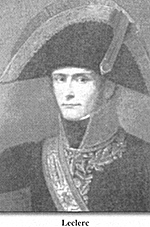 In the meantime, Hauptmann (Captain) Mumb had advanced with 1 co Tyrolean Jäger from Luttingen to Laufenburg and occupied the forest east of the town. The main part of the French advance guard remained west of Laufenburg. By evening, additional French forces had arrived in Murg, where General de Brigade (GB) Lorcet set up his headquarters. Back at Laufenburg, the two sides limited themselves to outpost clashes around the town during the late evening. Overall, the Austrians had a good picture of the situation: They knew that, in addition to the 1st Division leading the advance on Laufenburg, the 2nd Division (Leclerc) had just moved through the Hüningen bridgeheadm, reaching Wehr during the evening of the 27th with its HQ at Schworstadt.
In the meantime, Hauptmann (Captain) Mumb had advanced with 1 co Tyrolean Jäger from Luttingen to Laufenburg and occupied the forest east of the town. The main part of the French advance guard remained west of Laufenburg. By evening, additional French forces had arrived in Murg, where General de Brigade (GB) Lorcet set up his headquarters. Back at Laufenburg, the two sides limited themselves to outpost clashes around the town during the late evening. Overall, the Austrians had a good picture of the situation: They knew that, in addition to the 1st Division leading the advance on Laufenburg, the 2nd Division (Leclerc) had just moved through the Hüningen bridgeheadm, reaching Wehr during the evening of the 27th with its HQ at Schworstadt.
Furthermore, they knew that that one French column had moved from Kandern to Zell and on to Utzenfeld. Aside from the advance guard of 3rd Division, another part of GD Richepance’s Division had marched from Eimeldingen through Schopfheim into the Wiese valley to reach Zell and Mambach. This last force had been the main reason for cancelling the attack towards Freiburg, as a further French advance through the Wiese valley would threaten the left flank of the attack columns. Austrian intelligence had also gained a good assessment of the French attack along the Upper Rhine. They knew that
GB Grandjean commanded the advance guard brigade, (1st Battalion 14e demi-brigade legere, 11e Chasseurs a Cheval and 4e Hussars) that advanced to Laufenburg on the 27th and that GD Delmas had his HQ in Säckingen that day.
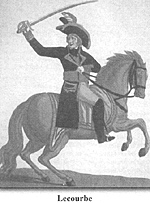 However, and most importantly, they had underestimated the overall number of French troops in the Hüningen bridgehead. They expected only 10.000 infantry and 2.700 cavalry troopers, while the exact figure was nearly double So, the French attack on the Alb river position was not unexpected in timing, but its size was.
However, and most importantly, they had underestimated the overall number of French troops in the Hüningen bridgehead. They expected only 10.000 infantry and 2.700 cavalry troopers, while the exact figure was nearly double So, the French attack on the Alb river position was not unexpected in timing, but its size was.
The information regarding the French movements in Northern Switzerland was somewhat different as intelligence was only patchy, in contrast to what had been gathered around Basle. FML Lothringen knew that the French were concentrating near Constance but he expected wrongly that they would attack through the Constance-Petershausen area. However, Lecourbe’s attack on 1st May near Stein am Rhein surprised the Austrians and gave Moreau a decisive advantage during the early stage of the spring campaign. By that stage, Austrian intelligence had failed. However, back on 27th April, the French had to storm the Alb river line to draw the Austrians’ attention.
Storming of the Alb River Position 28th April 1800
Back to Table of Contents -- First Empire # 73
Back to First Empire List of Issues
Back to MagWeb Master Magazine List
© Copyright 2003 by First Empire.
This article appears in MagWeb.com (Magazine Web) on the Internet World Wide Web. Other articles from military history and related magazines are available at http://www.magweb.com
|